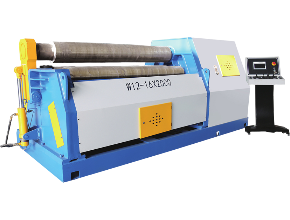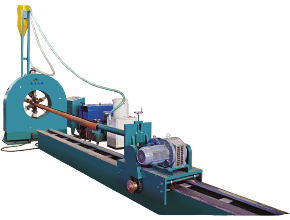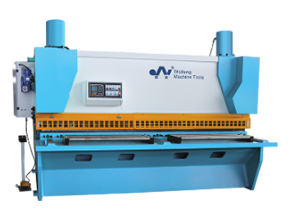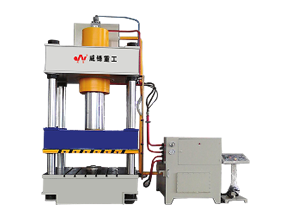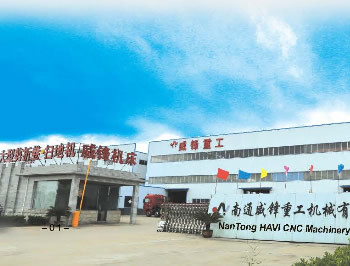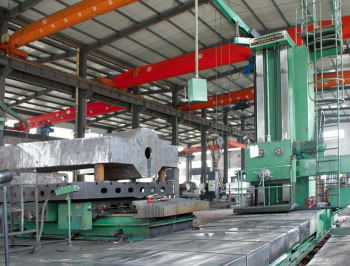Unlocking Precision: The Essential Guide to CNC Bending Machines
Release Time:
2025-07-08
Unlocking Precision: The Essential Guide to CNC Bending Machines
Table of Contents
- What is a CNC Bending Machine?
- A Brief History of CNC Bending Technology
- How CNC Bending Machines Work
- Advantages of Using CNC Bending Machines
- Applications of CNC Bending Machines in Industry
- Maintenance and Care for CNC Bending Machines
- How to Choose the Right CNC Bending Machine
- The Future of CNC Bending Technology
- FAQs About CNC Bending Machines
What is a CNC Bending Machine?
A CNC (Computer Numerical Control) bending machine is a state-of-the-art tool used in the manufacturing sector to bend and shape metal sheets and other materials with high precision. These machines are programmed using computer software, allowing for intricate designs and complex shapes to be achieved without the need for manual intervention. The integration of technology in the bending process significantly enhances accuracy, reduces material waste, and increases overall production efficiency.
Types of CNC Bending Machines
CNC bending machines come in various types, each designed to cater to specific needs within the manufacturing process. Some of the most common types include:
- CNC Press Brakes: These machines use a ram to press the material against a die to achieve the desired angle.
- CNC Tube Benders: Designed for bending tubes and pipes, these machines create bends without deforming the material.
- CNC Sheet Metal Benders: These are versatile machines that can handle various sheet metals, providing flexibility in production.
A Brief History of CNC Bending Technology
The evolution of CNC bending machines can be traced back to the early 20th century when manual bending methods were predominant. The introduction of hydraulic and pneumatic systems in the 1950s marked a significant turning point, allowing for more powerful and efficient bending processes. The 1980s saw the advent of CNC technology, which revolutionized the manufacturing industry by enabling precise and repeatable bending operations. Today, CNC bending machines are equipped with advanced software and automation features, making them indispensable tools for modern manufacturers.
How CNC Bending Machines Work
CNC bending machines operate based on computer-generated commands that dictate the movements of the machine's components. The process can be broken down into several key steps:
- Design Input: The operator designs the desired bend using CAD (Computer-Aided Design) software.
- Programming: The CAD design is converted into a CNC program, which includes the necessary instructions for the machine.
- Material Setup: The material to be bent is securely placed on the machine, ensuring proper alignment.
- Bending Process: The CNC machine executes the program, controlling the movement of the ram and die to achieve the precise bend.
- Quality Check: After bending, the finished product is inspected for accuracy and quality.
Key Components of a CNC Bending Machine
Understanding the key components of a CNC bending machine can help users appreciate its functionality:
- Control System: The brain of the machine, responsible for interpreting and executing commands.
- Hydraulic System: Provides the necessary force for bending operations.
- Bending Tooling: Includes the ram and die, which shape the material during bending.
- Frame Structure: Ensures stability and rigidity during the bending process.
Advantages of Using CNC Bending Machines
The shift towards CNC bending machines offers numerous advantages over traditional manual bending methods:
- Increased Precision: CNC technology allows for exact control of bending angles and dimensions, resulting in consistently high-quality outputs.
- Enhanced Efficiency: Automation reduces production time and labor costs, allowing manufacturers to increase their output.
- Reduced Material Waste: Accurate bending minimizes the need for rework or scrap material, contributing to cost savings.
- Flexibility: CNC machines can be easily reprogrammed to accommodate different projects, enhancing versatility in manufacturing.
Applications of CNC Bending Machines in Industry
CNC bending machines find applications in various industries, including:
- Aerospace: Precise bending for structural components and assemblies.
- Automotive: Production of parts such as frames, brackets, and exhaust systems.
- Construction: Shaping metal for building structures, handrails, and staircases.
- Electronics: Bending enclosures and components for devices and appliances.
Maintenance and Care for CNC Bending Machines
To ensure optimal performance and longevity of CNC bending machines, regular maintenance is crucial. Here are some key practices:
- Regular Inspections: Routine checks for wear and tear on components can prevent major breakdowns.
- Lubrication: Keeping moving parts lubricated reduces friction and prolongs the machine's lifespan.
- Software Updates: Regularly updating the CNC software ensures the machine operates with the latest features and improvements.
How to Choose the Right CNC Bending Machine
Selecting the right CNC bending machine involves considering several factors:
- Material Type: Evaluate the materials you will be bending to choose a machine with the appropriate capabilities.
- Bending Capacity: Assess the maximum thickness and width of materials the machine can handle.
- Software Features: Look for machines with user-friendly software that supports your design needs.
- Budget: Determine a budget that considers both initial investment and ongoing operational costs.
The Future of CNC Bending Technology
The future of CNC bending technology is poised for exciting advancements. Trends such as increased automation, artificial intelligence integration, and improved software capabilities are expected to enhance the efficiency and effectiveness of CNC bending machines. Additionally, the ongoing push for sustainability in manufacturing will likely drive innovations focused on reducing material waste and energy consumption.
FAQs About CNC Bending Machines
1. What materials can be bent using CNC bending machines?
CNC bending machines can bend a variety of materials, including steel, aluminum, brass, and plastics, depending on the specific machine's capabilities.
2. How accurate are CNC bending machines?
Modern CNC bending machines can achieve an accuracy of ±0.1 mm or better, making them highly precise for manufacturing needs.
3. What is the average lifespan of a CNC bending machine?
The lifespan of a CNC bending machine can vary between 10 to 20 years, depending on usage, maintenance, and the quality of the machine.
4. Can CNC bending machines be used for both small and large production runs?
Yes, CNC bending machines are versatile and can handle both small batch production and large-scale manufacturing efficiently.
5. What is the role of CAD software in CNC bending?
CAD software allows designers to create precise models and drawings, which are then converted into CNC programs to guide the bending process accurately.
Conclusion
In conclusion, CNC bending machines are essential tools that unlock precision in the manufacturing industry. Their ability to deliver high-quality bends with accuracy, efficiency, and reduced waste makes them invaluable for various applications. By understanding the workings, advantages, and future trends of CNC bending technology, businesses can make informed decisions that enhance their production processes. Investing in a CNC bending machine not only boosts productivity but also ensures that manufacturers remain competitive in an evolving marketplace.
Related News


